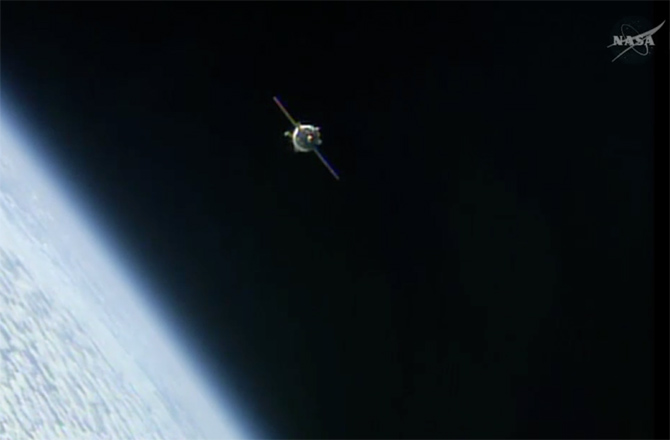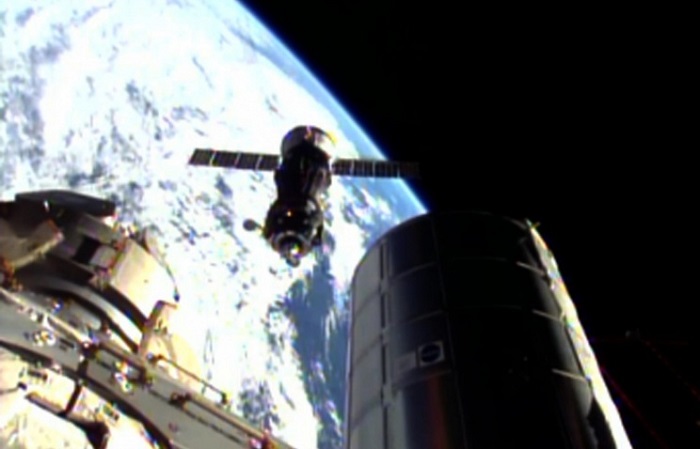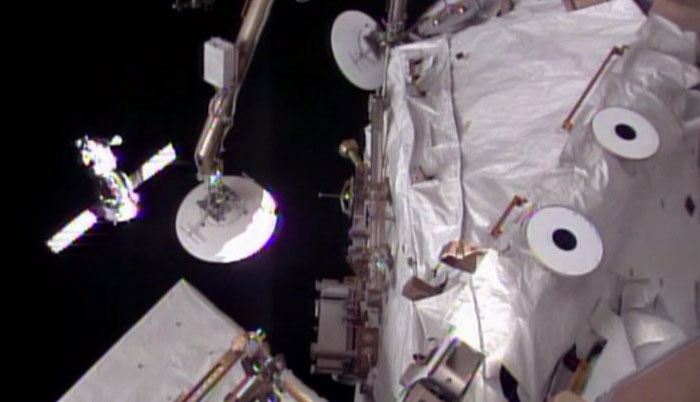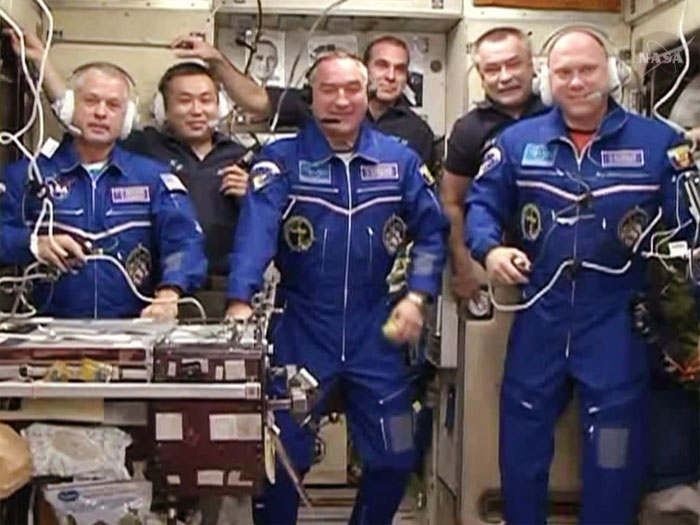.

Cosmonauts Alexander Skvortsov and Oleg Artemyev and NASA astronaut Steven Swanson lifted off at 5:17 p.m. EDT on Tuesday from the Baikonur Cosmodrome in Kazakhstan and expected to reach the station six hours later.
Instead, their Soyuz capsule reached the station at 7:53 p.m. EDT on Thursday.
“Better late than never,” said Navias, as the Soyuz was making its final approach.
Quelle: D-News
.

Russian spaceship Soyuz docks with ISS
The spaceship moored at the docking assembly of the Russian module Poisk at 03:53 in an automatic mode
KOROLYOV, March 28. /ITAR-TASS/. Russia's manned spaceship Soyuz TMA-12M with a new international crew of a long-duration expedition to the International Space Station (ISS), the ISS-39/40 mission, has docked with the Station on Friday, bringing Russian cosmonauts Alexander Skvortsov and Oleg Artemyev, and American astronaut Steve Swanson to orbit.
"The spaceship moored at the docking assembly of the Russian module Poisk (MIM-2) at 03:53, Moscow time, in an automatic mode," an official at the Flight Control Center (FCC) outside Moscow told Itar-Tass.
The arrivals floated through open hatches into the orbital station at 06:47 and were welcomed aboard by Mikhail Tyurin, Koichi Wakata, and Richard Mastracchio. All the crew members are feeling well, the FCC official added. The ISS crew membership has grown up to six. They all will be working together aboard the Station until May.
The ISS-39/40 mission will work in orbit for the planned 169-day period, during which the crew is to do a large amount of work, receive several resupply spacecraft and carry out extensive scientific research which includes 49 experiments under the Russian program and about 170 ones under the American one. Besides, during a spacewalk scheduled for August, the Russian cosmonauts are to launch a Peruvian minisatellite.
The spaceship Soyuz TMA-12M was launched from Baikonur on March 26 at 01:17, Moscow time. Originally, it was expected that the crew would be brought to the ISS in accordance with a short six-hour diagram. However, due to complications that arose in the operation of the spaceship's orientation syctem, a decision was made to switch over to a 48-hour diagram for docking.
In the history of the operation of the ISS, the first manned spaceship's flight according to a shortened six-hour diagram was made in March 2013 when the Soyuz TMA-08M delivered Russian cosmonauts Pavel Vinogradov and Alexander Misurkin and American astronaut Christopher Cassidy to the orbital station. A launch according to this diagram (spaceship makes only four revolutions around orbit) had been tried out in August 2012 by means of the Progresd M-16M resupply spacecraft.
Quelle: ITAR TASS
.

The Soyuz TMA-12M spacecraft is just a few meters away from docking.
.

Expedition 39, now a six-member crew, talks to family and mission officials moments after entering the space station for the first time.
New Soyuz Trio Completes Two Day Trip to Station
